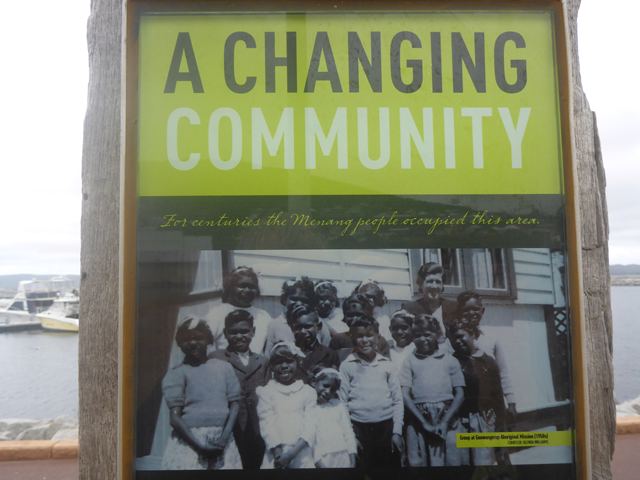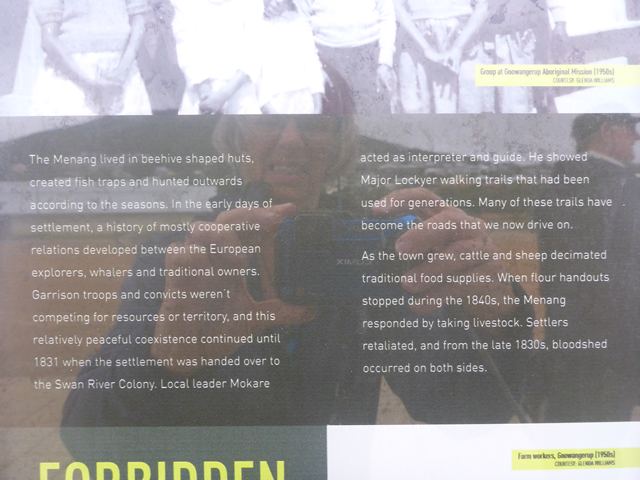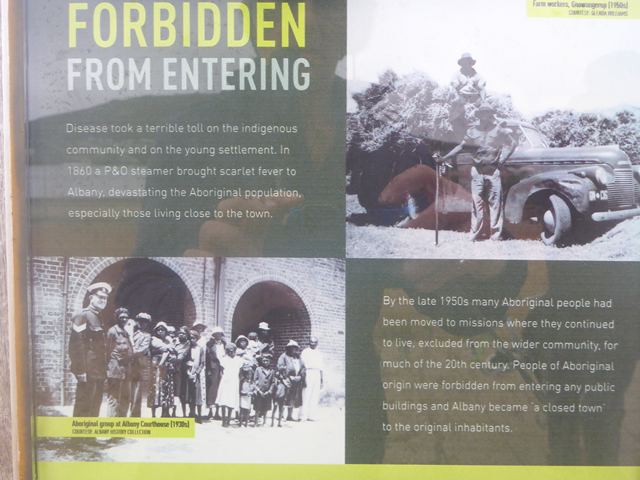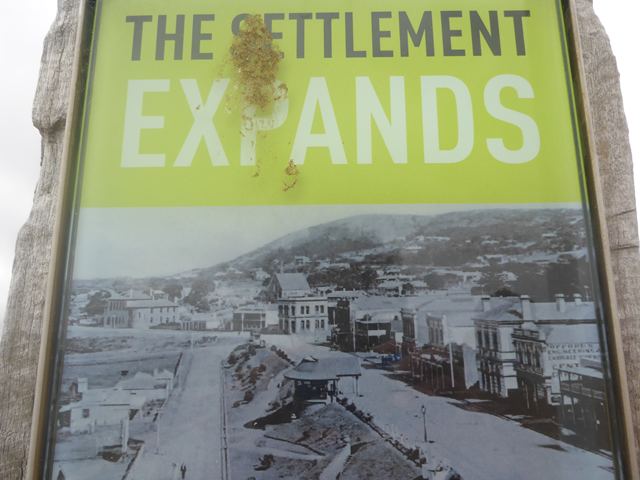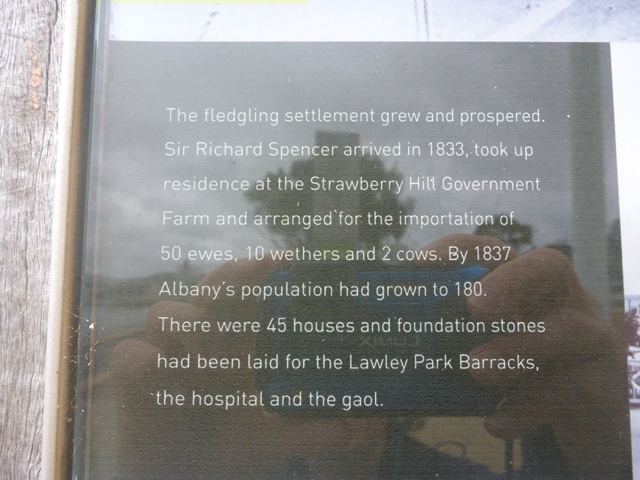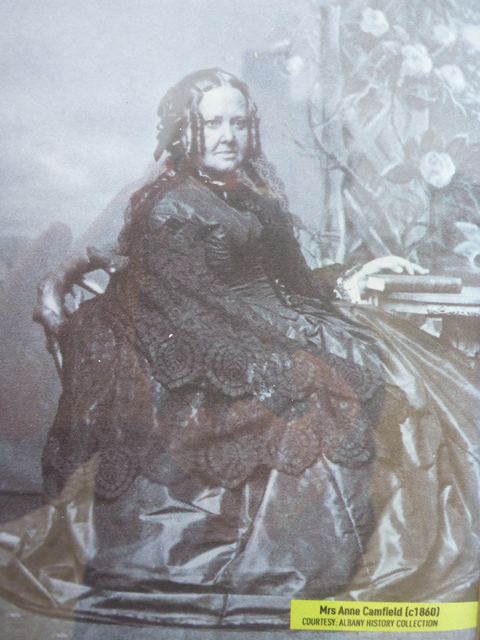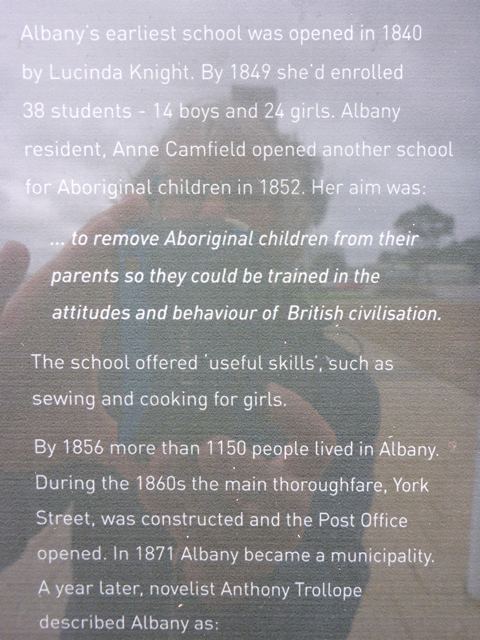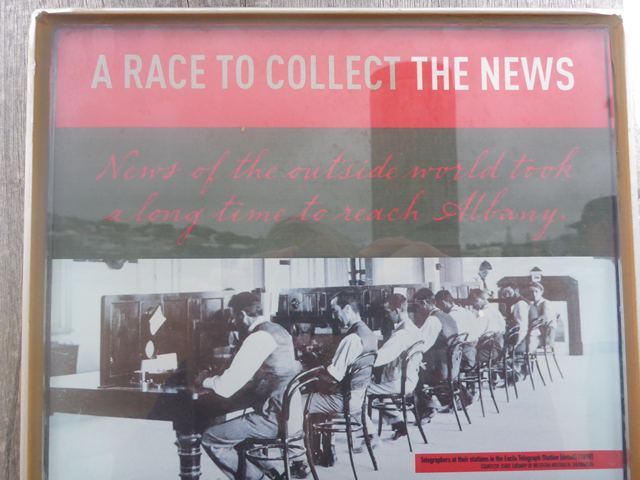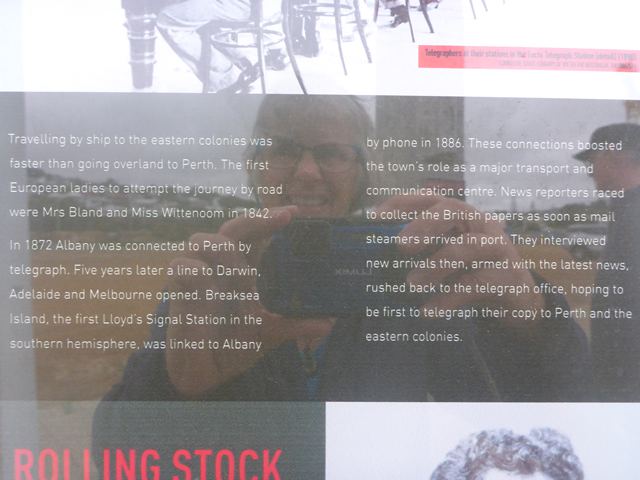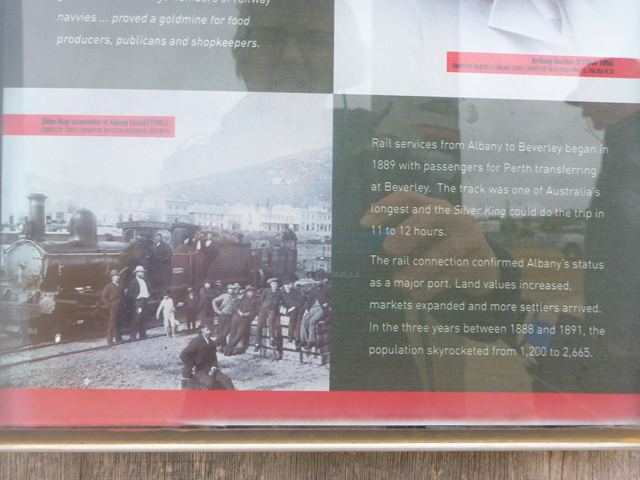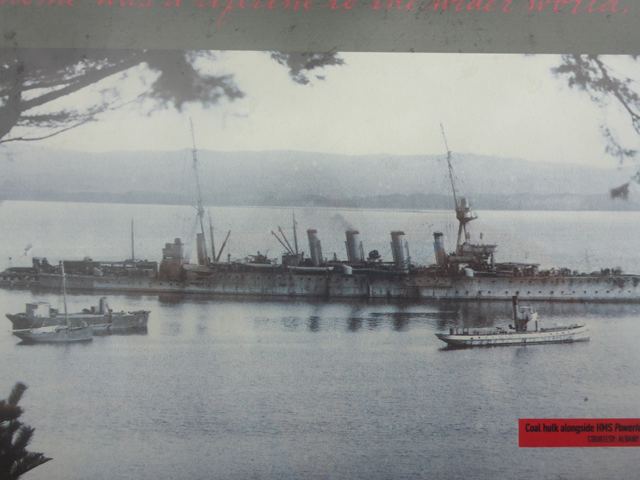2020 Aus Birth Pangs of the New Town of Albany

|
Birth Pangs of Early Albany The nineteenth century saw Albany burgeon as a major town due to its strategic position both on route from Europe to the east coast of Australia and back to Europe but also because of the natural resources it offered in the way of shelter, water and fresh meat. The early, largely friendly relations between the indigenous people and the newcomers soon changed when the building fences to enclose land started and increased rapidly in what must have been an alarming sight to the aborigines. They were rapidly losing their hunting and fishing grounds and thus their food supply of the past 50,000 years. As the facilities of road and rail transport and communications with the telegraph by 1872 and then telephone in 1886 were set in place the appeal to the Europeans of settling in the area grew and between 1888 and 1891 the permanent population grew from 1200 to 2665. The town prospered as can be seen in the architecture today reflecting various European styles from classical to colonial, carefully preserved to remind people of the commercially successful beginnings. The human cost to the aborigines is not forgotten fortunately, nor is the understanding at the time by a few of how morally wrong was much of their treatment. Anthony Trollope (Chronicles of Barsetshire amongst his numerous novels) visited Australia more than once after 1871 and had plenty to write about much of which caused offence to the Australians for example his reference to them as ‘braggarts’. He stayed much of the time with his younger son who was a sheep farmer in Victoria and it could have been there or on a stopover in Albany that he met a young Aborigine lady called Bessy Flower. I will write more about her in a later blog. Bessy was an exceptionally intelligent person by the highest standards of intellect, politic and human compassion. Trollope, a man with a similar disposition, wrote about her ‘remarkable intelligence, talent and skill’, and reflecting on his visit to Albany he recalled the location of the town as, “…. very pretty with a free outlook to a fine harbour, with bluff heads and picturesque islands. The climate is delightful. The place is healthy. I was assured that the beer brewed there was good. The grapes were certainly good.” As time moved on the local Menang people were largely absorbed into the European way of life, this being one of the reasons so many died of the diseases brought aboard the visiting ships. They filled such jobs as road builders, domestic and farm servants, farm workers, guides and interpreters, whaling teams, (kanga) roo shooters (for hides and meat) police assistants and trackers, a role for which they still do not qualify for pensions even after a lifetime of service. Also of course they were subject to the same harsh jurisdiction that brought so many criminals to Australia in the first place. They were convicted of various crimes ranging from theft of livestock (this after their hunting grounds were stolen from them) petty theft to murder and their punishment went through the full gamut of prison in Albany gaol, hard labour, imprisonment on Rottnest Island off Fremantle, work camps and execution. One industry that prevailed for much the second half of Albany’s first century was coal bunkering. The new age of steamships as well as the railway engines on the rapidly growing land network had to be supplied with fuel and the pall of coal dust hung over the town as the lumpers worked 24/7 with their shovels in the holds of the ships and coal hulks, with as yet unknown damage going on in their lungs, to keep the fledgling town growing. What had been clear, sweet sea air over Albany was now filled with odorous minute particles of coal dust and the sulphurous smell from the smoke from idling steam engines for half a century. Lumps of coal from those days are still washed up along the high tide line of Middleton Beach. But Albany’s supremacy in Western Australia came to an abrupt end in 1900 when the British Postmaster General decided that Fremantle would be the mailing port of the west and all that industry was taken away, the monthly visit of the mail and passenger carrying ‘Australia’ now taking place along the wharf in a young city 400 km away on the exposed west coast. Rail links with the east soon took over from the sailing routes to Sydney on account of their greater speed and safety and for a variety of reasons, mostly political and commercial, the town on the Swan River became the state capital known today as Perth, eclipsing the strategic importance of Albany as a centre for communications. However, Albany has never lost its income from the changing nature of trade. Even when Perth was growing as the state capital Albany was pioneering the supply of foodstuff to the goldmine fields at Kalgoorlie, 480km distant and as a satellite industry from this the fish freezing industry grew. Entrepreneurs had rushed to the town from the start. In 1897 fisherman Henry Mouchemore shipped two fishing boats to Albany specifically but not exclusively to supply the Goldfield miners with a healthier diet and the building of the Albany Refrigeration Works meant fresh, frozen and dried fish could be transported inland. A decade and a half on and the First World War made Albany the main port from which Australian and New Zealand soldiers were shipped to the battlefields of Europe, an estimated 40,000 left through the tiny gap between Princess Royal Harbour and King George Sound known as Ataturk Entrance after Kemal Ataturk, founder and first president of the new secular Turkey against whose brave soldiers the Australians and New Zealanders famously fought at Gallipoli. The success of Albany as a secure harbour ensured the ongoing arrival of settlers and undoubtedly led to the expansion of arable and livestock farming and the growth of the towns of the south west. Today the wharves are home to ranks of silos and piles of woodchip and the number of cruise ships visiting the area throughout the year, because of the pleasant climate, is growing or rather has been until the arrival of Coronavirus Covid 19. The effect of that has been to provide an alternative location from their normal destinations north towards Asia for cruise ships, like the two we have seen, The Pacific Princess and the Arcadia. To balance their presence is the decline in the arrival of Chinese tourists. How quickly do these human created activities and global connections crumble when nature takes over; look at the effect of the bushfires on the economy, the spread of disease on trade, travel and the global finance markets, to say nothing of the inexplicable run on loo paper here and abroad. Do the panickers and the shoppers fighting over the diminishing stocks in the shopping isles not realise it is probably made in China!
|
